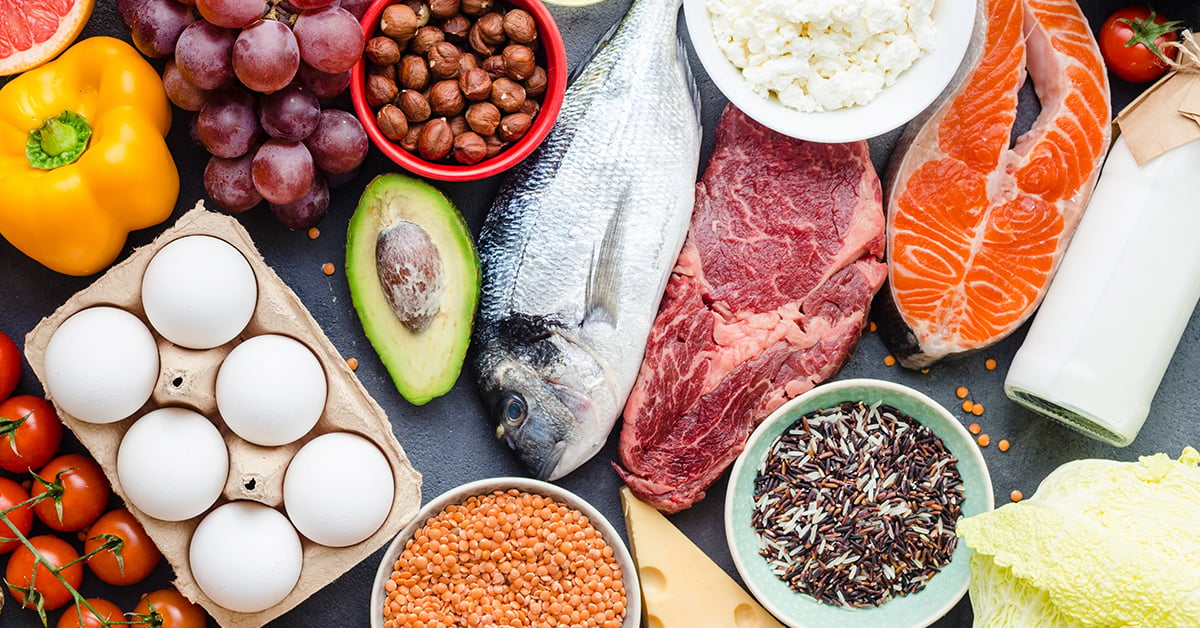
Phosphates in Foods: The Hidden Dangers
By Anna-Lena Koopmann
Almost everything that passes your lips contains artificial phosphates. We reveal how to spot them and why they are so harmful to your body.
Phosphates are salts and esters of phosphoric acid and are not inherently evil or hazardous. Many foods contain natural phosphates, which are healthy and even essential for the body and its functions. According to researchers, however, daily consumption of artificial phosphates has doubled in recent years. The rise in popularity of fast food and packaged goods is the number-one culprit behind this trend. But artificial phosphates are now also present in many other supposedly healthy products. And that’s because they’re akin to a magic bullet for the food industry. Keep reading to find out more about the risks associated with them and the serious health impacts they can cause.
Natural phosphates — a must-have for the body
Phosphorus is the second most abundant mineral in the body after calcium, and it plays a key role in various biologic processes including energy metabolism and bone and teeth mineralization. It is also involved in cell wall construction and stabilization of the blood’s pH value. The body absorbs as much of the mineral as it needs from foods containing phosphates. Any excess which cannot be processed is excreted by the kidneys in undigested form.
Natural phosphates occur in more or less everything we eat, but protein-rich foods such as meat, pulses, cereals, and nuts, and also fruits and vegetables, are particularly rich in them. According to nutrition expert Petra Orzech, “Phosphorus in its natural form is vital for a healthy body. Unfortunately, when you say ‘phosphorus’ most people think immediately of the kind of chemicals you’d use in a lab because they’re not familiar with the difference between natural and artificial phosphates.”
The antithesis to health: artificial phosphates and the food industry
In addition to the natural phosphates, there is a second group: the artificial phosphates which are used by food manufacturers. The miraculous properties of these industrial phosphates mean that they can be found in virtually every foodstuff on the shelf, as flavor enhancers, preservatives, stabilizers, anti-oxidants, acidity regulators, raising agents, thickeners, and binding agents.
In plain English: they make sausages and cheeses last longer, prevent blancmange powder from clumping together, stop the foam on instant cappuccinos from collapsing, and put the bright colors in candies and sodas. One liter of coke alone contains the maximum daily phosphate intake of 700 mg.
And it’s not just the usual unwholesome culprits of the food world—burgers, pizzas, and so on—that contain large quantities of artificial phosphates. These substances also pop up in many other foodstuffs which make a regular appearance on everyone’s table.
Particularly high levels of artificial phosphates can be found in the following:
- Fast foods
- Ready meals
- Sodas
- Processed cheese
- Cheese
- Milk and dairy products
- Meat and sausage products such as patties, ham, or salami
- Canned fish
- Pastries/cookies
- Baking powder
- All powdered products
Artificial phosphates — the hidden hazard
Artificial phosphates are in almost everything we eat. What makes them so hazardous? Most of them are freely soluble and are therefore absorbed almost entirely by the body. Natural phosphates are simply excreted if we consume them in excess, but this automatic safeguard is absent for artificial phosphates. This means that the body absorbs a lot more than it can handle.
The real issue is that even the most scrupulous of consumers are likely to find it impossible to stay below the maximum recommended daily intake.
The legislation states that phosphates need to be listed on food packaging, but manufacturers hide their presence behind terms such as “acidity regulator” or “E numbers” (E338 stands for phosphoric acid, for example). And that’s why it’s so hard for consumers to spot them. You might see a miniature sign at a sausage or cheese counter stating that the product “Contains phosphate”, but you won’t be told how much. And the presence of artificial phosphates does not need to be mentioned on the packaging of end products at all if the phosphates were only used as an adjunct or part of an ingredient during manufacturing, such as the cheese on a frozen pizza. Although EU directives lay down maximum permitted limits, medical practitioners have quite understandably called for clearer labeling requirements.
How artificial phosphates harm your health
What happens to the body when it absorbs more phosphate than it needs? The kidneys are permanently overloaded by the task of excreting the excess phosphates. Blood phosphate levels become far too high. This can have life-threatening consequences, and not just for people suffering from kidney disease. Recent studies show that even a slight increase in blood phosphate levels in healthy individuals can cause significant damage; the interior walls of the blood vessels transform and calcify, which can result in heart failure and strokes. Phosphate leaches calcium from the bones, making them brittle and increasing the risk of osteoporosis. Too much phosphate in the blood also causes muscle loss and accelerated skin aging.
Phosphate-free foods: what to remember in the store
So how can you manage to eat clean and avoid foods which contain artificial phosphates in your everyday life? Organic farmers are forbidden by law from adding phosphates to their products during processing. So you can rest easy with cheese or sausage products labeled as organic. The only phosphate additive which organic farmers are allowed to add to other foodstuffs is calcium phosphate (E341). If you’re keen to be phosphate-free, all you need to do in future is check the labels of organic frozen pizzas, blancmange powder and so on for this particular ingredient. And cooking from scratch as often as possible using fresh, unprocessed ingredients is naturally the best idea.
Here are some E numbers and the artificial phosphates/additives hiding behind them:
- E338 phosphoric acid
- E339 sodium phosphate
- E340 potassium phosphate
- E341 calcium phosphate
- E343 magnesium phosphate
- E450 diphosphate
- E451 triphosphate
- E452 polyphosphate
- E442 ammonium phosphatide
- E541 acid sodium aluminum phosphate
- E1410 mono-starch phosphate
- E1412 di-starch phosphate
- E1413 phosphate di-starch phosphate
- E1414 acetylated di-starch phosphate
- E1442 hydroxypropyl di-starch phosphate
About Anna-Lena Koopmann
Anna-Lena Koopmann’s job as a lifestyle journalist has served as the perfect excuse for her to try out the most outlandish food and fitness fads, from absurd celebrity diets to wacky workout trends. But HIIT workouts and an alkaline diet are the only things that have stuck. Why? Both are great for your body, super efficient, and guaranteed to put a smile on your face. What more could you ask?
The information provided through our blog or e-mails is not intended to be and is not a substitute for, professional medical advice, diagnosis or treatment that can be provided by your own health care professional. Garmin is not attempting to diagnose, treat or cure any physical ailment, or any mental or emotional issue, disease or condition. Our blogs are intended to help you reach your own health and wellness goals.




